
Since 2018, Japan has advanced its stand-off weapons programmes. It is currently planning to introduce the Norway-sourced Joint Strike Missile and undertaking research and development and/or deployment of at least six types of indigenous stand-off weapons.
This paper provides an overview of Japan's stand-off weapons programmes and examines whether, and if so how, such weapons could be developed into military assets for use in active offensive operations against neighbouring countries.
Introduction
On 18 December 2020, the Japanese Cabinet decided on a new policy to strengthen its "standoff defense capability", i.e. the capability to strike adversarial invasion forces by using standoff weapons from outside the ranges of the adversary's attack. Specifically, the new policy calls for upgrading the indigenous Type-12 guided surface-to-ship missiles (Type-12 SSMs) by extending their approximate maximum range up to 1,000 kilometres. [1] The upgraded stand-off weapons are to be launched from multiple platforms, including fighter jets and groundbased launchers. [2] The new policy also calls for research and development (R&D) in other advanced stand-off weapons, including hypervelocity gliding projectiles (HVGPs) and hypersonic weapons. [3]
These decisions are aimed at developing indigenous weapons to ensure Japan's ability to repel hostile forces in the event of an invasion of Japan's remote islands and doing so from outside the range of the adversary's air-defense capabilities. Specifically, the plan is to use these stand-off weapons to defend such islands, especially those belonging to the Southwestern Island Chain stretching from the vicinity of Taiwan to the Japanese mainland at Kyushu. Japan assesses that these islands could be invaded by the People's Liberation Army (PLA) of the People's Republic of China (PRC) in the event of a military contingency involving Taiwan because of the islands' proximity to Taiwan. Japan is also increasingly concerned that, in the near future, the PLA could attempt to invade the Senkaku Islands, located in the East China Sea approximately 170 kilometres from Taiwan, the ownership of which is contested by Japan, the PRC and Taiwan. [4]
In 2018, the Japanese Cabinet decided to procure foreign-manufactured stand-off missiles. With these recent decisions in December 2020, Japan has indicated a shift towards indigenous development of such weapons in response to the changing security environment in which neighbouring countries (the PRC, the Democratic People's Republic of Korea (DPRK) and the Russian Federation) are steadily modernising their military capabilities.
The Japanese Government has stressed that these stand-off capabilities are exclusively for defensive purposes. Nevertheless, the new policy has provoked debate within the Japanese National Diet over whether such weapons could be used to strike targets inside the territories of the other countries, which would be a departure from the traditional Japanese policy of "exclusively defence-oriented policy" whereby Japan has refrained from possessing such offensive capability.
This paper offers an overview of Japan's standoff weapons programmes and examines whether, and if so how, such weapons could be developed into military assets for use in active offensive operations. The paper also analyses the constraints on the possible pursuit of such capabilities by Japan.
Japan's Security Objectives
In December 2013, Japan established its first National Security Strategy. In that strategy, Japan expressed its growing concern about the advancement of the military capabilities and direction of the PLA. Since then, the Japanese Government has consistently expressed its deepening concern about the steady enhancement of the PLA's capabilities, especially those relating to amphibious landing operations which might be carried out against the remote Japanese islands belonging to the Southwestern Island Chain. [5] These islands are located on the "First Island Chain" which PRC military theorists conceive as forming a geographic basis for the country's maritime defensive perimeter. [6] In 2020, the Department of Defense of the United States, Japan's alliance partner, also assessed the PLA's anti-access/area-denial (A2/AD) capabilities as being "the most robust within the First Island Chain", pointing to the significant improvement of the PLA's power projection capabilities in this sea area. [7]
The Japanese concern is that, if a military confrontation should occur between Taiwan and the PRC, the PLA might attempt to invade these islands in order to prevent the deployment to these islands of US forces which would likely intervene in such a conflict in cooperation with the Japanese Self-Defense Forces (SDFs). As noted above, Japan is also increasingly concerned about the possibility of a PLA invasion of the Senkaku Islands in order to establish ownership of the islands by the PRC.
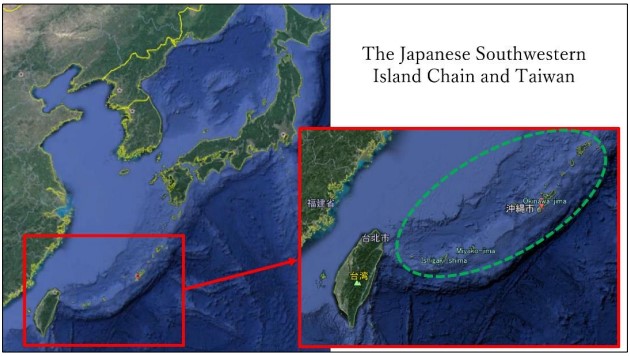
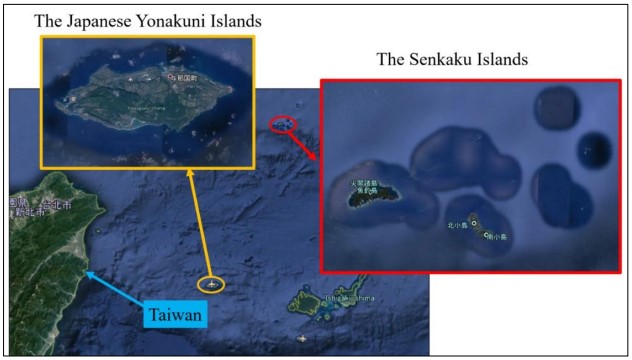
Figures 1 and 2: Maps indicating the Southwestern Island Chain, the Yonakuni Islands and the Senkaku Islands. Source: Google Maps, with notations by the author
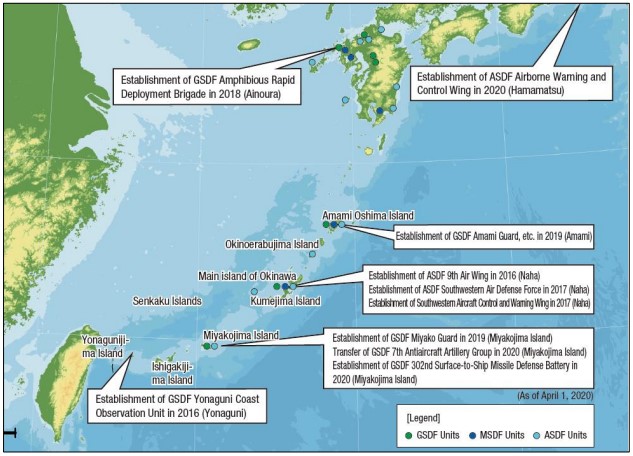
Figure 3: Deployment of the Japanese Self-Defense Forces to the Southwestern Island Chain. Source: Japan Ministry of Defense [8]
Evolution of Japan's Stand-Off Weapons Programmes
The 2018 Decision
In December 2018, Japan decided to equip the Air Self-Defense Force (ASDF) with stand-off missiles with an approximate maximum range of 900 kilometres. The initial decision was to import three types of foreign-sourced air-launched missiles: the Joint Strike Missile (JSM) from Norway and the Joint Air-to-Surface Standoff Missile (JASSM-ER) and the Long-Range Anti-Ship Missile (LRASM) from the United States.
According to publicly available information, the approximate range of the JSM was 500 kilometres, and that of the JASSM-ER and the LRASM was approximately 900 kilometres. The original plan was to load JSMs on the F-35A stealth fighter jets of the Japanese JASDF and the JASSM-ERs and the LRASMs on the F-15J/DJ fighter jets by modifying their airframes. [9] The F-35A has an approximate range of 2,200 km, [10] while the F-15J/DJ has an approximate range of 4,600km. [11]
Simultaneously, Japan also decided to proceed with R&D on several other types of stand-off weapons, including "HVGPs intended for the defense of remote islands (島嶼防衛用高速滑空弾)", "new surface-to-ship missiles intended for the defense of remote islands (新たな島嶼防衛用対艦誘導弾)" (the "New SSM") and "hypersonic weapons (極超音速誘導弾)." Further details of each programme are explained below. In effect, the 2018 decisions amounted to a decision to introduce the core technical capabilities that could be used for an air-launched attack against foreign territories should Japan choose to do so in the future.
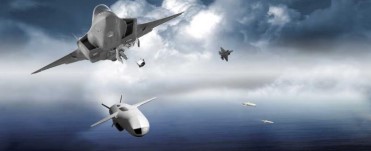
Figure 4: Joint Strike Missile (JSM). Source: Kongsberg [12]

Figure 5: Joint Air-to-Surface Standoff Missile (JASSM). Source: US Department of Air Force [13]
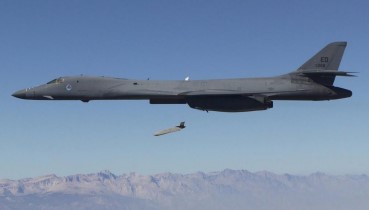
Figure 6: Long-Range Anti-Ship Missile (LRASM). Source: US Naval Air Systems Command [14]
Changing the Plan
The Type-12 SSMs were initially developed and produced by Mitsubishi Heavy Industries, Ltd. (MHI) as a ground-based short-range guided missile, [15] and have been deployed for use by the Japanese Ground Self-Defense Force (JGSDF) since 2012.
In 2017, MHI began the modification of the Type12 SSM with a view to extending its range by several hundred kilometres by the end of the fiscal year (FY) 2022, in accordance with a government decision at the time. The modified version of the missile was referred to as "the improved Type-12 SSM" [12式地対艦誘導弾(改)]. [16] During the course of the modifications, which proceeded smoothly, MHI was able to offer the prospect of modernising the domestically produced improved Type-12 SSM even further by equipping the missile with stealth capability and extending its range up to 1,000 km, which almost equals the ranges of the US-manufactured JASSM-ER and LRASM. [17]
In the meantime, the initial plan to introduce the JASSM-ER and the LRASM stalled because the modifications of their launch platform, i.e. the F15J/DJ fighter jets, proved far more expensive than originally estimated.
In light of these developments, the Japanese Government decided in December 2020 to prioritize the upgrading of the "improved Type12 SSMs", while suspending the plans to introduce the JASSM-ER and the LRASM and to modify the F-15J/DJ fighter jets. The decision was to upgrade the "improved Type-12 SSMs" by extending their range up to 1,000 kilometres and making additional significant modifications to the system in order to diversify the launch platforms to include the fighter jets. The result was the production of a subsequent model of a Type-12 SSM referred to in Japanese as "the Type-12 surface-to-ship guided missile (Advanced)" (12式地対艦誘導弾能力向上型) (for ease of reference, hereafter referred to as the "advanced Type-12 SSM". [18]
Japan's Stand-Off Weapons Programmes as of March 2021
While the initial plans to acquire the US-sourced JASSM-ER and the LRASM were suspended, Japan continues to acquire the Norway-sourced JSM and the US-sourced F-35A with a view to equipping the F-35A with the JSM. [19] The Japanese Ministry of Defense allocated a budget to acquire four F-35A fighter jets during FY 2021.

Figure 7: Joint Strike Missile (JSM). Source: Japanese Ministry of Defense [20]
Simultaneously, Japan also continues to conduct R&D on the indigenous stand-off weapons programmes including:
A. The "advanced Type-12 SSM"
B. The "New SSM"
C. HVGPs (an early model and an advanced model) and hypersonic weapons (an early model and an advanced model)
D. Air-to-ship missile (ASM) Type-3 (improved) and Type-3A
E. Stand-off electronic warfare aircraft
The "Advanced Type-12 SSM"
The "advanced Type-12 SSM" is currently under development. The design and functions of this missile system will differ considerable from those of the previous models.
The new missile is intended to fly over a long distance (a maximum distance of 1,000 km) in stealth mode. In order to ensure stealth capability, the missile would have to be equipped with main wings, and the body would have to be drastically changed.
As this missile is intended to fly at subsonic speeds, it will take some time after launch until it hits a target in the far distance. During such a flight, the missile would need to be fed with upto-date information about the moving target. Accordingly, the advanced Type-12 SSM is slated to be assisted by a tactical data link system which will transmit up-to-date data via satellite to continuously track the target. [21] The Japanese Ministry of Defense is currently constructing a tactical data link system to transmit target information to the missile via satellite from Japanese fighter jets and naval vessels.
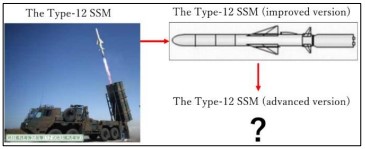
Figure 8: The Type-12 SSM. Source: The author's material based on information from a JGSD pamphlet (left); and the Japanese Ministry of Defense (right) [22]
The "New SSM"
As for the "New SSM", Kawasaki Heavy Industries, Ltd. is currently commissioned by the Japanese Ministry of Defense to lead the R&D on this programme. The "New SSM" is also slated to fly over a long distance and to be equipped with stealth capability.
The missile's unique feature lies in its enhanced maneuverability which is intended to ensure the survivability of the missile in the terminal phase of the flight. [23] According to a conceptual image of the "New SSM", which was disclosed by Masahisa Sato, a member of the Japanese National Diet who was debriefed by the Japanese Ministry of Defense, the "New SSM" should be able to execute a barrel roll, i.e. a flight maneuver in which the missile rolls on its longitudinal axis while following a spiral course in line with the direction of flight, prior to hitting the target. [25] For such a complex maneuver, the "New SSM" will require main wings and hardening of the body as well as an advanced guidance and control system.
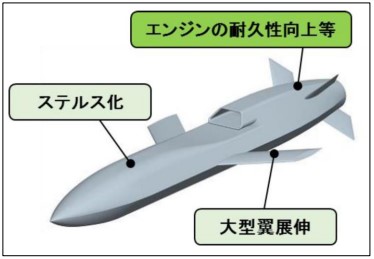
Figure 9: A conceptual image of the "New SSM". Source: Japanese Ministry of Defense [24]
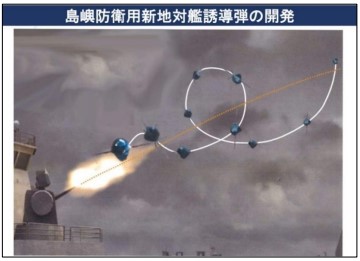
Figure 10: The "New SSM". Source: Masahisa Sato [26]
HVGPs and Hypersonic Weapons
The Japanese Ministry of Defense is also continuing the research and development of HVGPs and the hypersonic weapons although not much information has been disclosed about the current status of these programmes.
The propulsion system of the hypersonic weapon will utilize a scram jet engine or a supersoniccombustion ramjet engine in which the airflow through the engine remains supersonic, or greater than the speed of sound. [28]
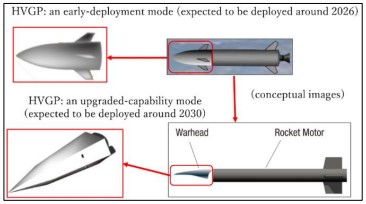
Figure 11: Conceptual images of the HVGP. Source: The author's material based on the information from the Japanese Ministry of Defense and the Japanese Acquisition, Technology & Logistics Agency (ATLA) [27]
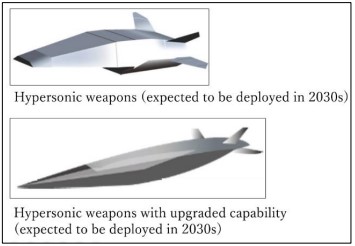
Figure 12: A conceptual image of the hypersonic weapons. Source: Japanese ATLA [29]
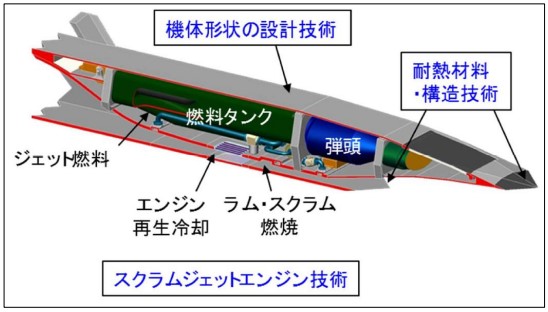
Figure 13: A conceptual image of the scramjet engine for hypersonic weapons. Source: the Japanese Ministry of Defense [30]
Air-to-Ship Missiles
In FY 2021, the Japanese Ministry of Defense will start mass production and deployment of a supersonic air-to-ship missile Type-3A (ASM3A). [31] The ASM-3A is an improved version of the previous model, ASM-3, which has been developed but not yet brought into the production stage. These supersonic missiles have enhanced survivability and will be equipped with a small light integral rocket ramjet engine which was developed by Japan. Neither the United States nor the European countries possess this type of ramjet engine. [32]
The Japanese Ministry of Defense has been undertaking additional modernisation of the ASM-3 with a view to further extending its range by reducing its weight. This project is slated for completion in FY 2025. [33]
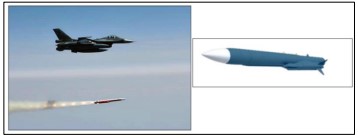
Figure 14: ASM-3/ASM-3A. Source: Japanese Ministry of Defense and ATLA [34]
Stand-Off Electronic Warfare Aircraft
The Japanese Ministry of Defense is also continuing the research and development of a stand-off electronic warfare aircraft which is intended to support the tactical operation of the fighter jets by neutralizing the radar of the invasion forces from a stand-off range. In particular, the Japanese Ministry of Defense focuses on developing the electronic warfare technologies to interrupt the tactical data link system of the invasion forces and also a common electronic warfare platform which can be deployed to multiple fighter jets and reconnaissance aircrafts. [35]
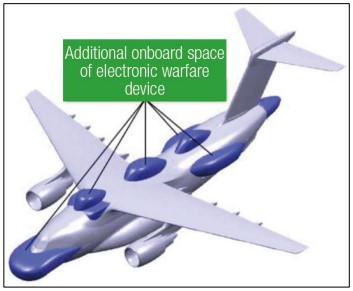
Figure 15: Stand-off electronic warfare aircraft. Source: Japanese Ministry of Defense [36]
Concept of Military Operations
In the event of a hostile invasion on or near the remote Japanese islands, the Japanese Self Defense Forces (JSDF) plan to use the different stand-off weapons to overwhelm the adversary's air defence systems. This would be achieved by simultaneously launching the missiles from multiple platforms, including fighter jets and ground-based launchers, and through different trajectories.
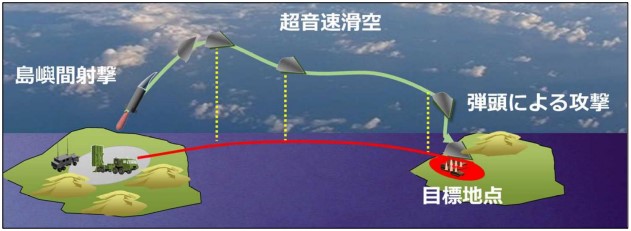
Figure 16: Flight path of HVGP which can be altered after the boost phase. Source: Japanese Ministry of Defense [37]
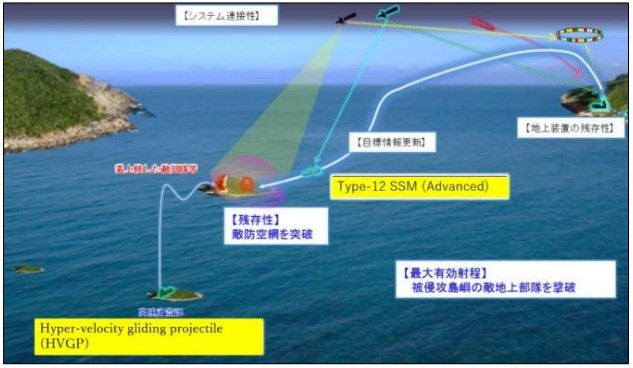
Figure 17: Simultaneous attacks against invasion force using "advanced Type-12 SSM" and HVGP. Source: information from Japanese ATLA edited by the author [38]
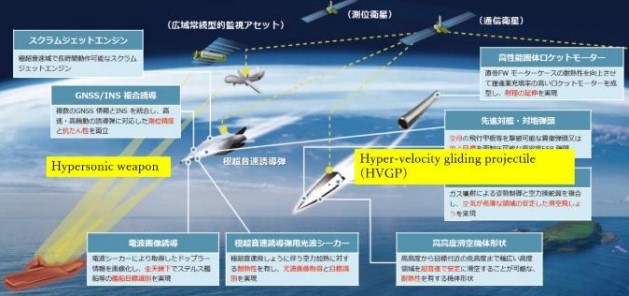
Figure 18: Schematic of attacks using HVGP and hypersonic weapon. Source: Information from Japanese ATLA edited by the author [39]
Possible Long-Range Strike Capabilities for Active Offensive Operations?
There is a widespread view in Japan that the new stand-off weapons could be further upgraded and that their ranges could be extended even further. [40] In light of that, there is speculation among the media and experts that these standoff missiles would enable Japan to possess counterforce strike capabilities against neighbouring countries, e.g. for striking missilerelated sites in those countries.
Would Japan be able to possess such active offense capabilities? Although the answer may vary depending upon the assumptions used in simulating relevant hypothetical scenarios, such stand-off weapons could, from a purely technical point of view, achieve that result under certain circumstances.
Consider the hypothetical scenario of a groundbased deployment of the "advanced Type-12 SSM" for the defence of the Southwestern Islands. In order to prevent a land-based attack on the islands (e.g. through amphibious landing forces and naval vessels), the missile would have to be deployed to a secure area, such as Okinawa's main island where the principal military bases of the Japanese SDFs and the US Marine Corps are located. Although the "advanced Type-12 SSM" is currently slated to achieve a maximum range of 1,000 km, the actual operational range of this missile would be shorter than its maximum range because of the requirement to engage in evasive maneuver penetration into the adversary's air-defence system. If the missile's operational range is set at around 600 km, the missile would not be able to reach the neighbouring countries' territories if launched from Okinawa's main island (see the red line in Figure 19 below).
However, if the same missile were deployed on the stealth F-35A fighter jet (with an official operational range of approximate 2,200 km), it could theoretically reach the neighbouring countries' territories (see the blue and green lines in Figure 19 below showing the distances from the Okinawa’s main island of 1,000 km and 1,500 km, respectively).
Similarly, the other stand-off weapons could also reach the territories of the neighbouring countries, from a purely technical point of view.
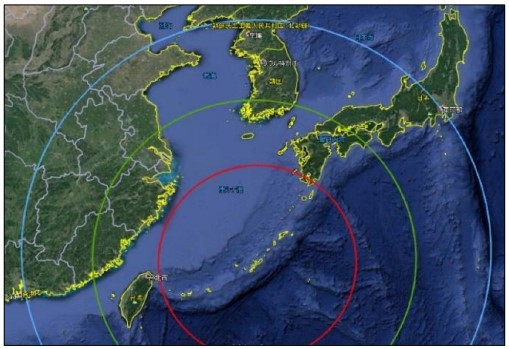
Figure 19: Maps indicating the distances from the Okinawa mainland as shown in blue (1,500km), green (1,000km) and red (600km), respectively. Source: Google Maps, with notations by the author.
Constraints
The aforementioned observations are based purely on theoretical hypotheses. In reality, Japan's possible strike capabilities against neighbouring countries would be constrained by several factors, as discussed below.
Problems Associated with Tactical Operations
Even if the stand-off weapons could reach the neighbouring countries, that does not automatically mean that they could strike a target precisely. There are debates among Japanese experts as to whether the weapons could actually neutralize an adversary's offensive assets targeting Japan, specifically ballistic and cruise missiles located on an adversary's territory. [41]
For example, most land-based missiles aimed at Japan within the territories of the neighbouring countries are designed to be deployed on a mobile transponder, erector and launcher (TEL). In order to strike the TELs on foreign territory, Japan would first need to be able to detect the TELs, continuously monitor their movements for real-time targeting and then deliver weapons effectively against the TELs, which would likely be located deep inside the adversary's territory.
In general, the TELs could be neutralized most effectively by precision strikes using fighter aircraft deployed to the hostile airspace. For this purpose, Japan would have to defeat the hostile air defense radar systems by deploying a larger number of the advanced fighter jets (e.g. the F35A). In addition, Japan would need to deploy airplanes for electronic warfare and aerial refueling. [42] These capabilities would require significant additional investment far in excess of Japan’s current defence budget.
Ground-based cruise missiles could be an alternative means for precision strikes, but they are not considered to be optimum because of their slow speed, which could allow time for the TELs to be concealed in hardened facilities or in tunnels. This would be especially true for Japan's cruise missiles given Japan’s limited capabilities for intelligence, surveillance and reconnaissance (ISR).
Japan's current plan to advance its ISR capabilities, i.e. the construction of the tactical data link system, is not designed to allow for dynamic real-time targeting of mobile targets on foreign soil. For example, the JASDF planned to establish only one squadron of unarmed aerial vehicles (UAVs) by the end of March 2021 and to acquire only one Global Hawk UAV that would not have real-time monitoring capabilities. [43] Japan plans to establish a constellation of ten information gathering satellites and will soon launch a study on the use of small satellite constellations for early warning purposes, in collaboration with the United States. [44 However, Japan would need to acquire a more robust and expensive fleet of UAVs and a constellation of information-gathering satellites well beyond those stipulated under current plans. This, in turn, would require considerable additional investment that would compete with the budgetary requirements of other military programmes and activities.
In short, it would be significantly challenging for Japan to establish indigenous ISR capabilities to strike military targets in neighbouring countries.
Remaining Uncertainties
It should be also noted that most of the existing R&D programmes for stand-off weapons have as yet to be completed. Even if such weapons systems could be developed successfully, it would likely require additional investment for Japan to modify them for use in offensive engagement on foreign soil because they are currently designed to be used for striking hostile naval vessels heading toward the remote Japanese islands or enemy forces occupying these islands. Given that the neighbouring countries are also modernising their military capabilities, especially their respective air neighbour systems, there is no guarantee that Japan's stand-off weapons could be used effectively for active offense in the near future.
Civilian Control
The most important constraint on Japan's active offense capabilities lies in the civilian control over the military programmes by the political leaders.
Theoretically, putting aside legal arguments and diplomatic considerations, it might be possible for Japan to develop active offensive strike capabilities for limited purposes in coordination and cooperation with the United States (e.g. against land-based infrastructure on the adversary's territory that are used for missile attacks against Japan, such as bomber hangars, command and control systems, fueling stations for the TELs). To do so, Japan might be able to utilize the Joint Direct Attack Munitions (JDAMs) which can be used for precision strike against land-based fixed targets, or the new stand-off weapons upon their successful completion in the future.
However, there is still no political consensus in Japan on this kind of option, not to mention within the ruling Liberal Democratic Party. There are quite a few politicians who are concerned about possible repercussions from the neighbouring countries. Indeed, a majority of the Japanese parliamentary members from the liberal party Komeito (one of the two ruling parties) and from the opposition parties are opposed to any initiative related to active offensive operations. All of the political parties share a common concern that any new defence policies should not violate the legal principle set in the "exclusively defence-oriented policy" which is based on the Japanese Constitution. The aforementioned political orientation appears to remain constant and unchanged for the foreseeable future.
If some major crisis were to occur in northeast Asia that significantly altered Japan's threat perception (e.g. a Taiwan crisis), it is possible to anticipate renewed debate in Japan with regard to whether it should develop limited offensive capabilities to complement the US forces' offensive operations in the theatre. However, whether Japan would alter its defense posture would depend upon the multiple factors articulated above.
Conclusions
Since 2018, Japan has advanced its stand-off weapons programmes. It is currently planning to introduce the Norway-sourced JSM and undertaking research and development and/or deployment of at least six types of indigenous stand-off weapons. Theoretically, the maximum ranges of some of these weapons would become long enough to reach the territories of neighbouring countries. Therefore, concerns have been raised in Japan that such weapons could be used for active offensive operations.
In reality, however, the development of indigenous stand-off missiles alone would be insufficient for Japan to be able to carry out active offensive operations. There are multiple factors that constrain Japan from establishing such capabilities, including political, financial and operational. The Japanese political orientation toward the exclusively defensive posture of its military appears to remain strong for the foreseeable future.
If the security environment changes drastically, it is possible to anticipate future debate in Japan with regard to whether the country should develop limited offensive capabilities to complement the US forces' offensive operations in the theater. Whether Japan would alter its defense posture would depend upon the multiple factors as articulated in this paper.
However, so long as the relevant strategy, planning, budgets and training are unavailable, the JSDF would not be able to undertake active offensive operations, even if the stand-off weapons were completed.
[1] The decision by the Japanese Cabinet and the Japanese National Defense Council, Procurement of a New Missile Defense System, etc. and Strengthening Stand-off Defense Capability, 18 December 2020, a provisional English translation is available at: https://www.mod.go.jp/j/approach/agenda/guideline/2019/pdf/Defense_Program_e_2020.pdf
[2] The Japanese Ministry of Defense, 令和2年政策評価書 (Report on the evaluation of the policy of FY 2020), December 2020, available at: https://www.mod.go.jp/j/approach/hyouka/seisaku/2020/pdf/jizen_08_honbun.pdf
[3] The Japanese Ministry of Defense, わが国の防衛と予算(案)・令和3年度予算の概要 (Defense Programmes and Budget of Japan), 21 December 2021, available at: https://www.mod.go.jp/j/yosan/yosan_gaiyo/2021/yosan_20201218.pdf
[4] The PRC calls those islands the "Diaoyu Islands", while Taiwan refers to them as the "Tiaoyutai Islands".
[5] The Japanese Cabinet, National Defense Program Guidelines for FY 2019 and Beyond, 18 December 2018, available at: https://www.mod.go.jp/j/approach/agenda/guideline/2019/pdf/20181218_e.pdf
[6] Office of Secretary of Defense, Annual Report to Congress: Military Power of the People's Republic of China 2007, U.S. Department of Defense, 2007, p. 16
[7] Office of Secretary of Defense, Annual Report to Congress: Military and Security Developments Involving the People's Republic of China, U.S. Department of Defense, 2020, p. 72, available at: https://media.defense.gov/2020/Sep/01/2002488689/-1/-1/1/2020-DOD-CHINA-MILITARYPOWER-REPORT-FINAL.PDF
[8] The Japanese Ministry of Defense, Defense of Japan 2020, p. 254
[9] The Japanese Ministry of Defense, Press conference by Itsunori Onodera, Japanese Defense Minister, 8 December 2017, available at: https://warp.da.ndl.go.jp/info:ndljp/pid/11591426/www.mod.go.jp/j/press/kisha/2017/12/08.html
[10] Japan JASDF, Main Equipment F-35A, available at: https://www.mod.go.jp/asdf/equipment/sentouki/F-35/index.html
[11] Japan JASDF, Main Equipment F-15J/DJ, available at: https://www.mod.go.jp/asdf/hofukita/airclaft/f15.html
[12] Kongsberg Defence & Aerospace, Joint Strike Missile (JSM), available at: https://www.kongsberg.com/kda/products/defence-and-security/missile-systems/joint-strikemissile-jsm/
[13] The Japanese Ministry of Defense, Defense of Japan 2020 (Japanese version), available at: http://www.clearing.mod.go.jp/hakusho_data/2018/html/nt320000.html
[14] The US Naval Air Systems Command, Long Range Anti-Ship Missile (LRASM), available at: https://www.navair.navy.mil/product/Long-Range-Anti-Ship-Missile-LRASM
[15] Mitsubishi Heavy Industries, Ltd., 12式地対艦誘導弾 (12SSM) (The Type-12 surface-to-ship guided missile), available at: https://www.mhi.com/jp/products/defense/type12_ground-toship_missile_launcher.html
[16] The Japanese Ministry of Defense, 平成28年度 政策評価書(事前の事業評価)(Report on the evaluation of the policy of FY 2016), August 2016, available at: https://warp.da.ndl.go.jp/info:ndljp/pid/11591426/www.mod.go.jp/j/approach/hyouka/seisaku/ 28/pdf/jizen_02_honbun.pdf
[17] Masahisa Sato, Director of the Committee on Foreign Affairs and Defense of the House of Councilors of the Japanese National Diet, Twitter, 9 December 2020, available at: https://twitter.com/SatoMasahisa/status/1336470497144389632
[18] According to the Japanese Ministry of Defense, "the Type-12 surface-to-ship guided missile (Advanced)" is an advanced version of the "improved Type-12 SSM". The two missiles share similar names but are substantially different from each other.
[19] The Japanese Ministry of Defense, 我が国の防衛と予算(案)令和3年度予算の概要 (Proposed Defense Programmes and Budget of Japan FY 2021), December 2020
[20] The Japanese Ministry of Defense, Defense of Japan 2018
[21] The Japanese Ministry of Defense, 令和2年政策評価書 (Report on the evaluation of the policy of FY 2020), December 2020, available at: https://www.mod.go.jp/j/approach/hyouka/seisaku/2020/pdf/jizen_08_honbun.pdf
[22] The Japanese Ministry of Defense, Defense of Japan 2020, Chart IV-2-3-1, available at: https://www.mod.go.jp/j/publication/wp/wp2020/html/n42301000.html
[23] The Japanese Ministry of Defense, 平成29年度 政策評価書 (事前の事業評価) (Report on the evaluation of the policy of FY 2017), August 2017, available at: https://warp.da.ndl.go.jp/info:ndljp/pid/11591426/www.mod.go.jp/j/approach/hyouka/seisaku/ 29/pdf/jizen_01_honbun.pdf
[24] The Japanese Ministry of Defense, 我が国の防衛と予算 平成 30年度予算の概要 (Defense Programmes and Budget of Japan FY 2018), December 2017
[25] Masahisa Sato, Twitter, 9 December 2020, available at: https://twitter.com/SatoMasahisa/status/1336470497144389632. Mr. Sato is a Director of the Committee on Foreign Affairs and Defense of the House of Councilors of the Japanese National Diet.
[26] Masahisa Sato, Director of the Committee on Foreign Affairs and Defense of the House of Councilors of the Japanese National Diet, Twitter, 9 December 2020, available at: https://twitter.com/SatoMasahisa/status/1336470497144389632
[27] The Japanese Ministry of Defense, 我が国の防衛と予算 平成 30年度予算の概要 (Defense Programmes and Budget of Japan FY 2018), December 2017; The Japanese Ministry of Defense, 平成30年度 事前の事業評価 島嶼防衛用高速滑空弾の研究 (Evaluation of the project on the research of HVGP intended for the defense of remote islands in FY 2018), August 2018, available at: https://warp.da.ndl.go.jp/info:ndljp/pid/11591426/www.mod.go.jp/j/approach/hyouka/seisaku/ 30/pdf/jizen_02_sankou.pdf; The Japanese Acquisition, Technology & Logistics Agency, 研究開発ビジョン スタンド・オフ防衛能⼒の取組 (A Vision for the Research and Development of the Stand-off Defense Capabilities), 31 March 2020
[28] The US National Aeronautics and Space Administration, available at: https://www.nasa.gov/centers/langley/news/factsheets/X43A_2006_5.html
[29] The Japanese ATLA, 研究開発ビジョン スタンド・オフ防衛能⼒の取組 (A Vision for the Research and Development of the Stand-off Defence Capabilities), 31 March 2020
[30] The Japanese Ministry of Defense, 平成30年度 政策評価書 (事前の事業評価) (Report on the evaluation of the policy of FY 2018), August 2018, available at: https://warp.da.ndl.go.jp/info:ndljp/pid/11591426/www.mod.go.jp/j/approach/hyouka/seisaku/ 30/pdf/jizen_06_sankou.pdf
[31] The Japanese Ministry of Defense, Press news, 25 December 2020, available at: https://www.mod.go.jp/j/press/news/2020/12/25a.pdf
[32] The Japanese Ministry of Defense, 令和2年政策評価書 (Report on the evaluation of the policy of FY 2020), December 2020, available at: https://warp.da.ndl.go.jp/info:ndljp/pid/11591426/www.mod.go.jp/j/approach/hyouka/seisaku/ 31/pdf/jizen_03_honbun.pdf
[33] The Japanese Ministry of Defense, 令和2年政策評価書 (Report on the evaluation of the policy of FY 2020), December 2020, available at: https://warp.da.ndl.go.jp/info:ndljp/pid/11591426/www.mod.go.jp/j/approach/hyouka/seisaku/ 31/pdf/jizen_03_honbun.pdf
[34] The Japanese Ministry of Defense, Press news, 25 December 2020, available at: https://www.mod.go.jp/j/press/news/2020/12/25a.pdf; and the homepage of the Japanese ATLA, available at: https://www.mod.go.jp/atla/soubi_system.html
[35] The Japanese Ministry of Defense,令和元年政策評価書 (Report on the evaluation of the policy of FY 2019), August 2019, available at: https://warp.da.ndl.go.jp/info:ndljp/pid/11591426/www.mod.go.jp/j/approach/hyouka/seisaku/ 31/pdf/jizen_02_honbun.pdf
[36] The Japanese Ministry of Defense, Defense of Japan 2020, p. 224
[37] The Japanese Ministry of Defense, 我が国の防衛と予算 平成 30年度予算の概要 (Defense Programmes and Budget of Japan FY 2018), December 2017; The Japanese Ministry of Defense, 平成30年度 事前の事業評価 島嶼防衛用高速滑空弾の研究 (Evaluation of the project on the research of HVGP intended for the defense of remote islands in FY 2018), August 2018, available at: https://warp.da.ndl.go.jp/info:ndljp/pid/11591426/www.mod.go.jp/j/approach/hyouka/seisaku/ 29/pdf/jizen_13_sankou.pdf
[38] The Japanese ATLA, 研究開発ビジョン スタンド・オフ防衛能⼒の取組 (A Vision for the Research and Development of the Stand-off Defence Capabilities), 31 March 2020
[39] The Japanese ATLA, 研究開発ビジョン スタンド・オフ防衛能⼒の取組 (A Vision for the Research and Development of the Stand-off Defence Capabilities), 31 March 2020
[40] A Japanese media reported that the Japanese authorities consider that the range of the improved Type-12 SSM could be extended up to 1,500 kilometres (the author has not corroborated this report yet). See, 「国産トマホーク」開発へ 射程2千キロの新型対艦弾 12式は1500キロに延伸 (Developing a domestic "Tomahawk missile", a new surface-to ship missile with a range of 2,000 kilometres, the Type 12 SSM’s range to be extended up to 1,500 kilometres), The Sankei News online, 29 December 2020, available at: https://www.sankei.com/politics/news/201229/plt2012290001-n1.html
[41] The Japanese Constitution prohibits any aggression against foreign countries. Therefore, any strike against foreign territories would have to meet strict criteria. In principle, the Japanese Government considers that a strike against an adversary's missile sites could be constitutional under certain conditions, but that a strike against an adversary's military forces that have not invaded Japan would generally be considered unconstitutional. In this regard, in 1956, Minister of State for Defense Naka Funada provided the following official interpretation of the Japanese Constitution which he read on behalf of Prime Minister Ichiro Hatoyama at a meeting of the House of Representatives Cabinet Committee: "If Japan were in imminent danger of an illegal invasion, and the method of invasion were a missile attack against Japan's national territory, I simply cannot believe that the spirit of the Constitution requires that we merely sit and wait to die. In such a case, I believe that we should take the absolute minimum measures that are unavoidably necessary to defend against such an attack, so that in defending against a missile attack, for example, if no other suitable means are available, striking the missile base should be legally acceptable and falls within the range of self-defense." "In normal situations, or in other words, when other suitable means of defense are available, I can imagine a situation where striking a base within the territory of the attacking nation is merely convenient for defense. I spoke with the understanding that such a casual attack on a base does not fall within the range of self-defense." See, Dai 24 kai Kokkai Shugiin Naikaku Iinkai Giroku dai 15 go (24th House of Representatives Cabinet Committee Meeting Minutes, No. 15) (February 29, 1956), p. 241, translation of the original Japanese document was provided in Sugio Takahashi, Dealing with the Ballistic Missile Threats, NIDS Security Report, No. 7, December 2006, p. 81
[42] Currently, the JASDF plans to procure 45 aircraft of F-35A Fighters. See, Japanese National Security Council and the Cabinet, "Medium Term Defense Program (FY 2019 - FY 2023)", 18 December 2018, p. 36, available at: https://www.mod.go.jp/j/approach/agenda/guideline/2019/pdf/chuki_seibi31-35_e.pdf
[43] The Japanese National Security Council and the Cabinet, "Medium Term Defense Program (FY 2019 - FY 2023)", 18 December 2018, p. 7 and p. 36, available at: https://www.mod.go.jp/j/approach/agenda/guideline/2019/pdf/chuki_seibi31-35_e.pdf
[44] National Space Policy Secretariat of the Japanese Cabinet Office, "Outline of the Basic Plan on Space Policy", 30 June 2020, p. 5, available at: https://www8.cao.go.jp/space/english/basicplan/2020/abstract_0825.pdf